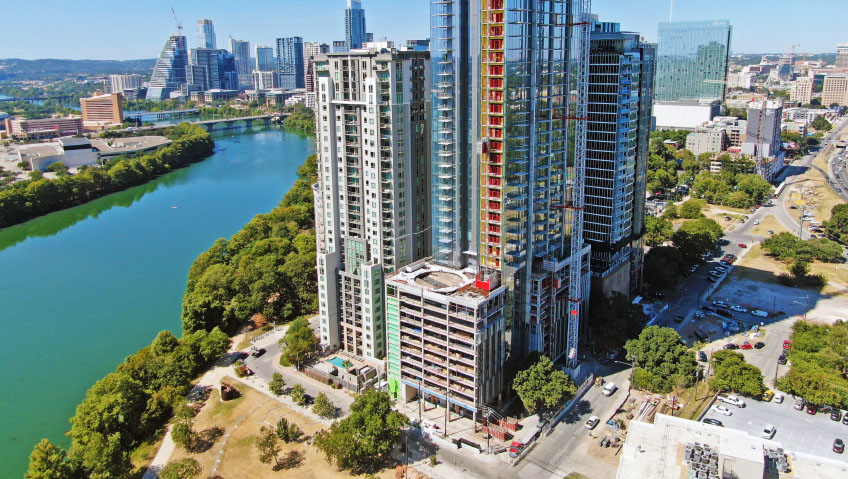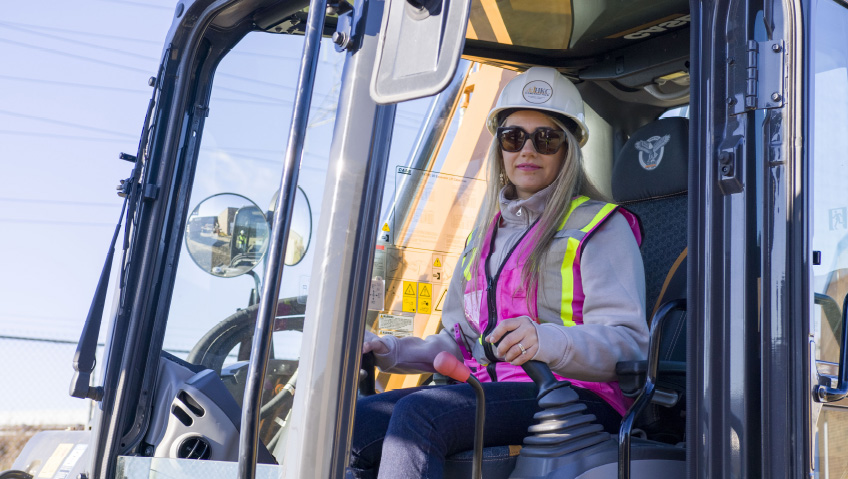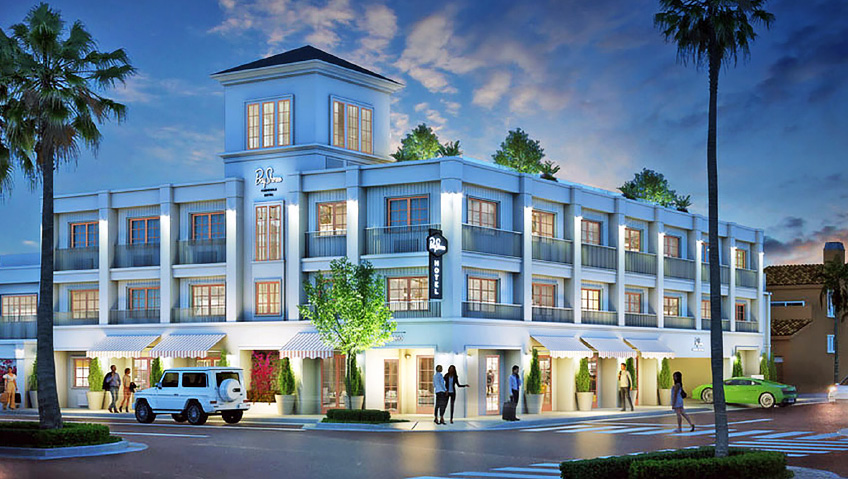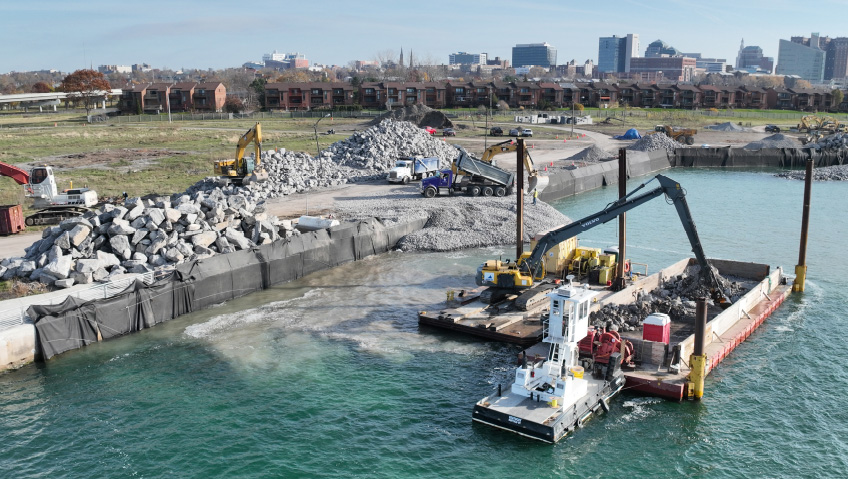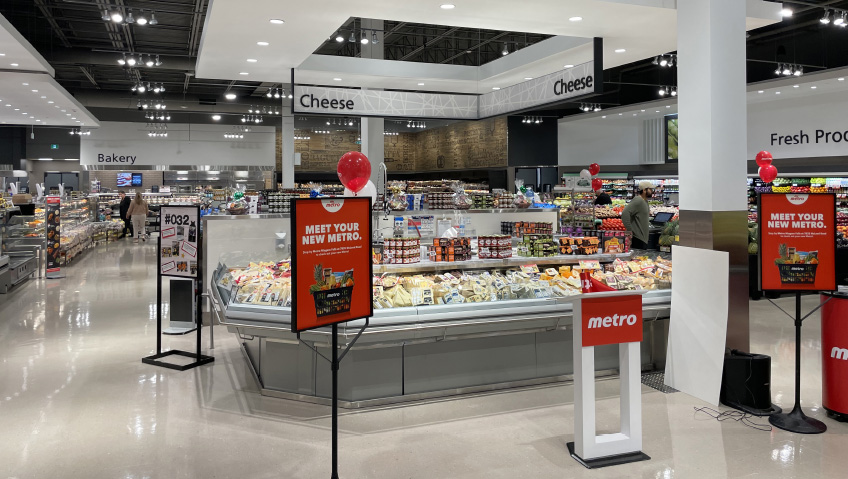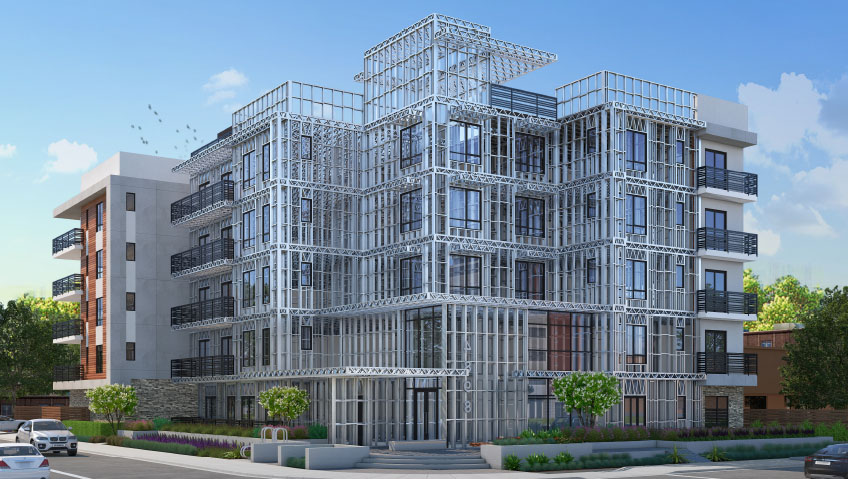Midwest Drywall Co. Inc., (MWD) is thriving as it prepares to mark its fiftieth anniversary next year. COVID-19 threw the Wichita, Kansas-based wall and ceiling drywall subcontractor something of a curveball, but it has endured. Since it was last profiled in the November 2019 issue of Construction in Focus magazine, the employee-owned firm has opened an office in an additional geographic location and continues to take on large projects as it approaches a corporate milestone.
“We concentrate on projects where we can use our nearly fifty years of experience and managing expertise,” says Executive Vice President Steven Nienke.
Midwest offers a variety of services centered on design-assist; prefabricated, light-gauge, panelized walls; commercial insulation and drywall; floor, roof, and ceiling systems; load-bearing light-gauge and non-load-bearing light-gauge framing. It serves the student housing, hospitality, multifamily residential, government, religious, warehouse/industrial, entertainment, and retail markets.
MWD has an in-house quality assurance program and provides comprehensive training for foremen, supervisors, and project leaders on how to make quality top-of-mind among workers.
In the mid-1980s, Midwest began utilizing a prefabricated panelized wall system for the first time, during the construction of a residence for seniors, and went on to become a leader in the prefabrication field. MWD operates a manufacturing plant in Wichita for prefabricated exterior bypass panelized walls and load-bearing panelized walls, among other items. The plant uses compression tables and welds panels to optimize durability and strength. Prefabricating its components provides Midwest more control over the final product.
Such work currently represents “about twenty-five percent of our overall business,” according to Nienke.
Midwest takes a unique approach to design-assist. “We’ll utilize anything in the industry to drive the building costs down, while increasing efficiency of the overall project, without limiting your building design,” states the company website.
Midwest recently expanded its footprint with a new operational office in Austin, Texas in addition to existing offices in Tulsa, Oklahoma; Oklahoma City, Oklahoma; Denver, Colorado; Harrison, Arkansas; Dallas, Texas; and Wichita, Kansas. The company takes a measured approach to expansion by establishing offices in places where it is already doing work.
“The Austin market was really buzzing. We started with a couple of very large jobs about eighteen months ago. We just opened an operational office there three months ago,” says Nienke.
The company was contracted to work on the new Travis County Civil and Family Courts facility in Austin. Abundant rain in the region—which has led to recurring water remediation issues—has not made the assignment any easier. In spite of this, the nearly 450,000-square-foot courthouse is scheduled to be completed late next year.
MWD is completing another exciting project involving the construction of a luxury resort at the Spanish Peaks Mountain Club, an exclusive golf course and ski community located in Big Sky, Montana. It is a significant job that comes with a unique set of issues.
“The contract will complete for an amount greater than $25 million,” says Nienke. “It started almost 24 months ago and presented significant challenges including manpower, material shortages, and price increases, and the overall winter weather conditions in the area.”
COVID-19 was another hurdle. Last summer, there was a significant outbreak of the virus at the Spanish Peaks’ construction site involving over one hundred reported worker COVID cases—one of the largest outbreaks in Montana at the time.
In addition to reducing the available workforce, the coronavirus created project management headaches. Prior to the pandemic, staff would gather in Bozeman and ride buses for the forty-five-minute trip to the mountainous construction site. This made transporting laborers to the remote project site a complicated task. The bus system was cancelled, and workers were required to commute in individual vehicles. Drivers were told to only take one passenger at a time, to lower the risk of transmission. Despite this huge hassle, work continued, and Midwest is scheduled to complete its part of the project later this fall.
In response to COVID, management also temporarily arranged for 50 percent of office staff to work from home, and health protocols were put in place to reduce the potential for infection in the field.
Safety precautions are par for the course at Midwest, which strives to maintain a safe work environment. To achieve an experience modification rate (EMR) of .80, the company’s safety staff members work “under the watchful eye of our safety manager,” says Nienke. “The safety staff are present on our job sites every week, auditing what they see, training when the need is there, and reviewing current accident issues.”
Past projects, also conducted in a safety-first, high-quality manner, include The Venetian hotel and casino in Las Vegas. MWD was given responsibility for building exteriors and over 100,000 square feet of interior facades. The company used glass-fiber-reinforced concrete, plaster, drywall, and exterior insulation and finish systems to complete this multi-million-dollar assignment.
At present, MWD has roughly 400 staff on direct payroll, “and Midwest has a long-term relationship with the United Brotherhood of Carpenters who provide ongoing training to increase the skills of the workforce,” states Nienke. “We want our employees to have a great attitude and be honest and trustworthy. Benefits include health/hospitalization plans, 401(k) with matching contributions, vacations, et cetera,” he says.
“The field craftsmen, management, and leadership all work hard and set goals to achieve as we move forward. We are a team and always looking for ways to assist each other and achieve cost-efficient, successful results on each project completed,” he continues.
When COVID hit, Midwest enhanced its website and social media presence and started producing an online version of its popular lunch-and-learn sessions, focusing on topics such as the benefits of prefabrication to audiences of general contractors, engineers, architects, and other interested parties. The company is slowly returning to pre-pandemic norms and has re-launched in-person lunch-and-learn sessions, for example, to complement the virtual sessions.
Leadership of the company is undergoing a major change as Nienke prepares for retirement. He joined Midwest Drywall in 1973, the year after it was founded, and eventually became president and chief executive officer. Nienke recently transitioned to Executive Vice President as part of the company’s succession strategy.
“We’ve had our succession plan in place for several years now,” he says. “Marvin Hartley has already assumed my position of President and CEO, and Lisa Henry has assumed the Chief Financial Officer position from my partner Denis Dieker. Both of these people have been with MWD for over twenty years. Denis and I intend on working for a time in the future to assist in the transition and continue to mentor this leadership team.”
The biggest change from the time he started to the present day is technology. “It’s probably computers and what we do with them today, as far as estimating and project management. Management and administration are tech-savvy, and virtually all of our lead field people, including foremen, have tablets and other mobile devices,” he says.
In 2018, Nienke and Dieker implemented an employee stock ownership plan (ESOP) that transitions the ownership of Midwest to an ESOP Trust for the benefit of the non-CBA employees. Shares are held in Trust but allocated to employees inside a tax-advantaged retirement plan. Nienke says this plan is one of the secrets to Midwest’s success, noting that the ESOP “has helped us retain and search out new, key employees and managers.”
The ESOP is not just a nifty employee benefit; it is also a spur for further growth. “An ESOP functions well when the company is profitable. Leadership, management and employees understand that maintaining and increasing revenues and profits will directly affect the values of their ESOP and other benefits. Employees understand these concepts make us go and make us grow,” Nienke says.
Three-quarters of MWD clients are repeat customers, and a loyal client base has also been instrumental in the company’s success, he says. Other keys to MWD’s impressive longevity include “outstanding field and office managers, our employee benefits, and being fair and above board with all our employees,” he adds.
According to Nienke, the company’s biggest challenge is adapting to price increases and shortages of needed materials such as steel, drywall, insulation, and specialty products. Still, he offers a rosy forecast.
“In five years, we will be approaching $130 million (and possibly as much as $150 million) in annual volume, but more than anything else, it is our goal to provide a great place for our employees to work and for them to be able to balance and enjoy time off with their families. We want to provide a stable work environment, appealing to the present and future generational needs,” states Nienke.

